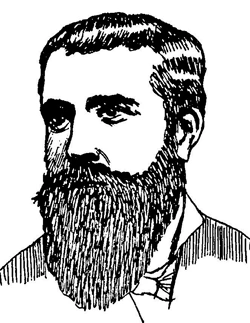Monet Claude
Publié le 06/04/2019

Extrait du document

Monet Claude Peintre français
* 14.2.1840, Paris
+ 6.12.1926, Giverny près de Paris
Le tableau de Monet \"Impression, soleil levant\" (1872), qui inspire aux critiques l'appellation péjorative d'\"impressionisme\" lors de l'exposition de 1874 chez Nadar, donne son nom à un mouvement et à une époque. Après avoir débuté comme caricaturiste, le jeune artiste se tourne vers la peinture, sur les conseils d'Eugène Boudin, et part pour Paris en 1858. Lié à Auguste Renoir et Alfred Sisley (* 1839,+ 1899), il réalise des paysages et des portraits dont la technique picturale se libère totalement des contraintes académiques de l'époque (\"Embouchure de la Seine à Honfleur\", 1864 ; \"Camille à la robe verte\", 1866). Après la guerre de 1870, ses toiles, exposées à chaque manifestation impressionniste (1874-1879), témoignent d'une éclatante maturité : fleuves, paysages caressés par le vent, jardins en fleurs et variations de la lumière en constituent les éléments récurrents. Des années 1890 à la fin de sa carrière, Monet peint des séries devenues célèbres (les \"Cathédrales de Rouen\", 1892-1893 ; les \"Nymphéas\", 1898-1926). Consacré par l'Exposition universelle de 1900, le génie du peintre est proclamé par ses amis et protecteurs de longue date, parmi lesquels Octave Mirbeau et Georges Clemenceau. Ses oeuvres tardives, réalisées alors qu'il est menacé de cécité, vont bien au-delà de l'impressionnisme et annoncent à certains égards l'abstraction.

«
Claude Monet
I INTRODUCTION
Monet’s Gardens at GivernyFrom 1890 until his death in 1926, Claude Monet lived and painted in the small village of Giverny, near Paris.
Monetplanted extensive gardens at Giverny, including the water garden pictured here.
Water lilies filled the pond and were thefrequent subject of the artist’s paintings.
Monet’s house, now known as the Foundation Claude Monet, has been restoredand is decorated in the original color schemes selected by Monet.
The house and gardens are open to the public during thespring and summer months.© Microsoft Corporation.
All Rights Reserved.
Claude Monet (1840-1926), French painter, a leading figure in the late-19th-century movement called impressionism.
Monet’s paintings captured scenes of middle-class life and the ever-changing qualities of sunlight in nature.
His technique of applying bright, unmixed colors in quick, short strokes became a hallmark of impressionism.
II INFLUENCES AND TRAINING
Claude MonetThis portrait of French painter Claude Monet was painted around 1875 by his friend and colleague Pierre Auguste Renoir.Monet and Renoir were leaders of the impressionist movement in France and often painted together along the Seine Rivernear Paris.
This portrait is in the collection of the Musée d’Orsay in Paris.Giraudon/Art Resource, NY
The son of a successful tradesman in marine supplies, Claude Oscar Monet grew up in Le Havre on the Normandy coast.
He showed signs of artistic talent as ateenager, drawing skillful caricatures of local personalities.
He admired the work of many of the more adventurous artists of his day, landscapists associated with theBarbizon School, such as Camille Corot, Charles-François Daubigny, Constant Troyon, and Henri Rousseau.
The Barbizon painters promoted landscape painting thatstood without reference to historic, religious, or mythological stories, a concept that was then new to French art.
Monet also admired French realist artists GustaveCourbet and Honoré Daumier.
The realists depicted members of the working classes, who until then had been considered unworthy subjects for art.
Monet receivedcrucial early guidance from two artists who specialized in painting seascapes out-of-doors, Eugène Boudin, a fellow painter from Le Havre, and Dutch artist JohanBarthold Jongkind, whom Monet met in 1862.
The unusual viewpoints (scenes shown from above or below), and broad areas of bright color in Japanese woodblockprints also influenced Monet’s work.
Monet's formal art training began in 1859 at the Académie Suisse, a studio that provided models for aspiring artists to draw or paint, but gave little direct instruction.Another future leader of the impressionists, Camille Pissarro, was a fellow student there, and the two soon became close friends.
After serving briefly in the Frenchmilitary in Algeria, Monet joined a Parisian studio run by Charles Gabriel Gleyre in 1862.
Gleyre’s studio was essentially student-run.
Like the Académie Suisse, itencouraged students to draw from models, rather than from plaster casts of ancient Greek and Roman statues, which was the common teaching method of moreconservative academies.
In Gleyre’s studio Monet met several artists who would become fellow impressionists, Auguste Renoir, Alfred Sisley, and Frédéric Bazille.
Bazille,who came from a wealthy family, gave Monet regular financial support during the 1860s.
III EARLY WORK
In 1865 Monet had his first works—two ambitious seascapes—accepted by the Salon, a juried art exhibition sponsored annually by the official French Academy of FineArts.
Thereafter he had a checkered record of acceptance and rejection by the conservative Salon jury, although his works received praise from critics such as Frenchwriter Émile Zola and were purchased by discerning and influential buyers.
Monet’s canvases from the mid-1860s were massive.
The unfinished Luncheon on the Grass, a picnic scene begun in 1865, was originally intended to measure roughly 4.5 m by 6 m (15 ft by 20 ft).
For two other large paintings from that time, Monet’s future wife Camille Doncieux posed in elegant attire: The Green Dress (1866, Kunsthalle, Bremen, Germany), which was shown in the Salon of 1866, and Women in the Garden (1867, Musée d'Orsay, Paris).
After the Salon rejected Women in the Garden for its 1867 exhibition, Monet may have reconsidered investing so much effort in a single painting that might not sell, and he began to work on a smaller scale.
In 1869 Monet and Renoir painted a series of landscapes en plein air (outdoors) at a fashionable bathing place, La Grenouillère, on the Seine River near Paris.
In these.
»
↓↓↓ APERÇU DU DOCUMENT ↓↓↓
Liens utiles
- Histoire de l’art S2 devoir 1 Claude Monet : Le déjeuner sur l’herbe
- Analyse de tableau La Pie (Claude Monet)
- Monet Claude Peintre français
- Claude Monet
- CLAUDE MONET: vie et oeuvre

































